Smartphone Case Design Voting App
"DigiVote", Vote Mobile - UI/UX Case Study
![]()

Overview
Serious electoral fraud, corruption, and unfair practices bring the reliability of the electoral process into question. They thus undermine democracy itself.
In case of offline voting the official procedures must be reliable. Voters must be assured that only eligible voters have voted, that they have been given the chance to cast their ballots under circumstances that guarantee freedom from pressure, and that their votes have then been properly recorded.
Where there is significant inefficiency or deliberate cheating by the authorities responsible for administering an election, the whole purpose of holding an election is negated.
Problem Statement🤔
The year is 2020. The Political Landscape in the US has taken a turn. Due to the past elections being rigged news and Russia's involvement in US Elections, citizens have become cautious of their leaders.
The challenge is to bring political transparency by designing a mobile app where citizens can vote their registered leaders.
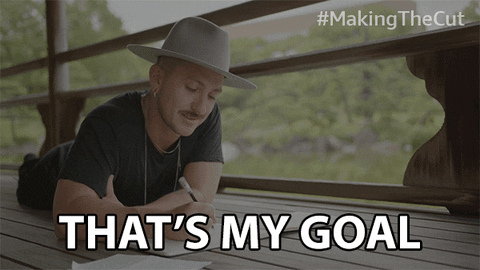
Defining the audience👨👨👦👦
Based on the problem statement we can first categorize our users into two high-level audiences-
- The voters
- The candidates
Voters can also be further categorized into several different groups
- Millennials and Gen Z consisting of the working professionals and the students
- Older Generation or Baby Boomers- For Senior citizens with various health concerns
- Disabled and infirm
- For groups of people who cannot make it to the polls, mostly overseas civilians or military personnel
Understanding the millennials & the existing system
In this process, I try to be as open-ended as possible to collect more and more data so that I can widen my scope of exploration.
I explored some online blog/articles to build more context in this space so that I can design a clear solution.
According to a survey millennial voters had the lowest percentage turnout in 2016 (49.4% of eligible voters), while being an age group that has the highest number of potential voters.
To figure out the "why's" of non-voting I conducted user interview mainly with people eligible to vote. The purpose was to determine how can the new product appeal to the millennials. I also analyzed & went through the reviews of similar apps such as Voter Helpline, Garuda & True Voter.
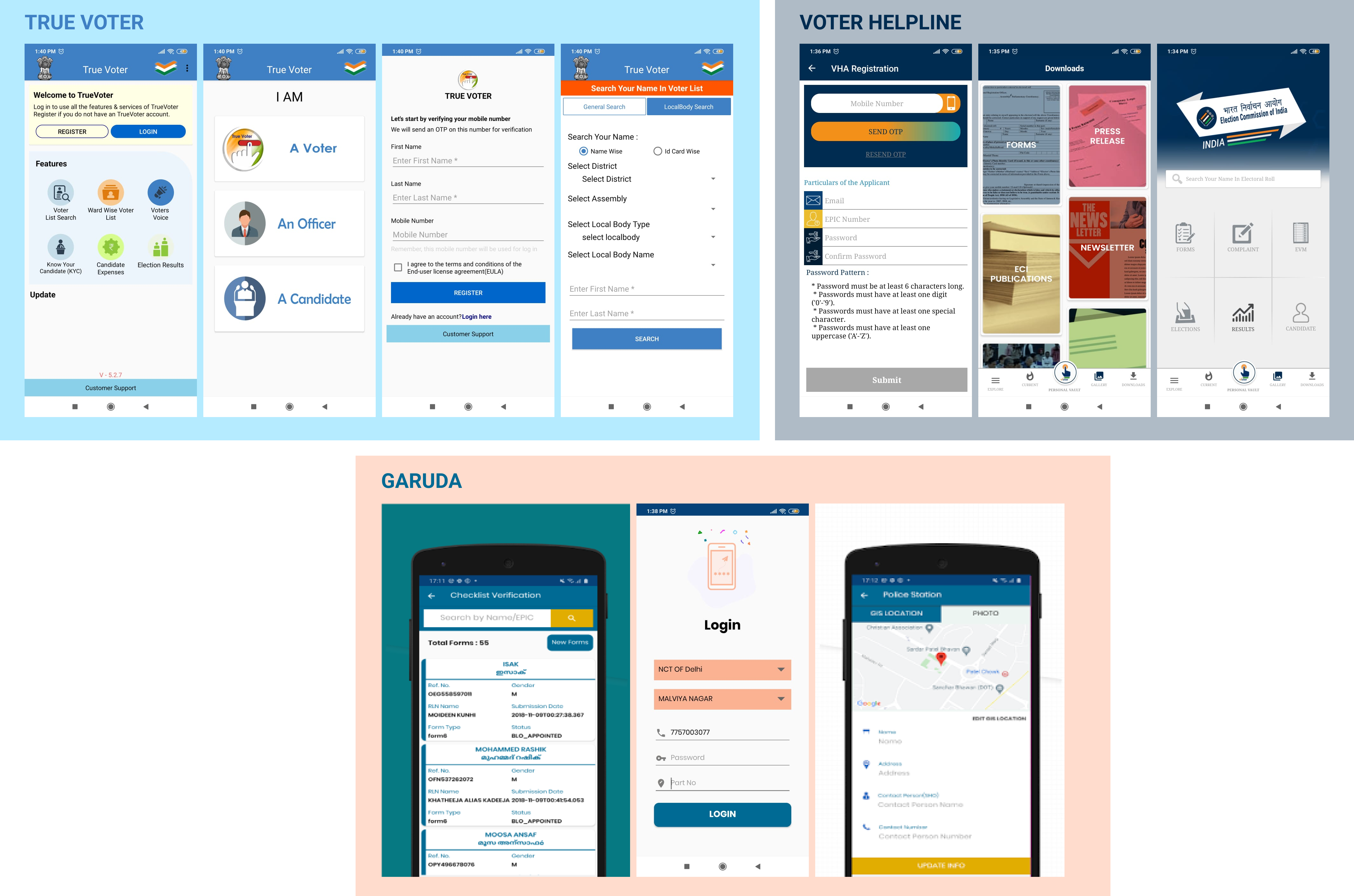
A quantitative research (survey via google forms) was not possible in such a short amount of time therefore I opted for telephonic & in-person interview.
Insights and suggestions from the user:-
- Didn't feel educated on the issues and don't want to misplace their vote.
- Uninformed about the issues
- Don't feel like their vote matters
- Skeptical about the current voting system
- The whole voting process is overwhelming
- Don't know how/where to register
Thus I was able to conclude from my user interview on what the users will need from the product:-
- Online registration & voting
- Learn about the issues being voted on in the upcoming elections
- Learn about the candidates and their stances on the issues
How United States elects the offices of the House of Representatives & the Senate?
United States Congress has two houses, the House of Representatives and the Senate. There are public elections for both houses, and a third, separate election, is held to choose a president. Members of the House of Representatives stand for re-election every two years. Each state is split into districts. And each district votes for one representative. The number of districts depends on the population of each state.
Senators, like members of the House of Representatives, are also elected to their seats by the public. Senators serve six year terms. Each state is represented by two senators, regardless of its population. The first past the post voting system is used. So the candidate with the most votes wins.
How is the president chosen?
Every four years people in the US vote for who they want to be their president.
The president makes decisions about how the US is run and how it will work with other countries.
The two main parties, the Democrats and the Republicans, host big get togethers where they choose their presidential candidates, the person they think will be the best leader for the nation.
The winning candidate then chooses their vice presidential candidate, also known as the running mate, to help support the campaign. Presidential candidates usually choose someone with different areas of skill or knowledge so they present voters with the best package. Together, they're known as a ticket.
The candidates then campaign across the country to explain their views and plans to voters.
However, the public don't vote directly for their choice of President. Instead, a system called the Electoral College is used. Each state is allocated a number of electors that will make the final choice.
Accessibility Issues👨🦼
Evidence indicates that there are not yet equal participants in the American political system, raising concerns that they remain marginalized and their interests are often neglected by politicians and elected officials." The study further found that fully closing the disability gap would have led to 3.0 million more voters in 2008, potentially affecting many races and subsequent public policies.
- Online voter registration sites should be a boon to people with disabilities, but at present most are not fully accessible. Among the features not available are accessible forms, alternative text for images, color contrast, size options, and keyboard accessibility.
- Election authorities wouldn't dream of placing a polling station at the top of a rugged mountain, miles from the nearest village. Yet, for a wheelchair user or an elderly voter who uses a walker, a second floor polling station is just as inaccessible as that mountain.
Some of the links I explored:-
Election and disability
The Five Challenges Facing Voters with Disabilities
8 Ways To Make Elections Better For People With Disabilities
Potential persona
Once I had enough insights which I gathered in the previous section, I was clear about my ideas and what direction I wanted to take in terms of showing content. I created User Personas which turned out to be really useful while listing out the features for Minimum Viable Product.
Since every person above the age of 18 is a potential voter therefore keeping in mind the limited time I had, I decided to focus on only one group, i.e. the Disabled and Infirm.
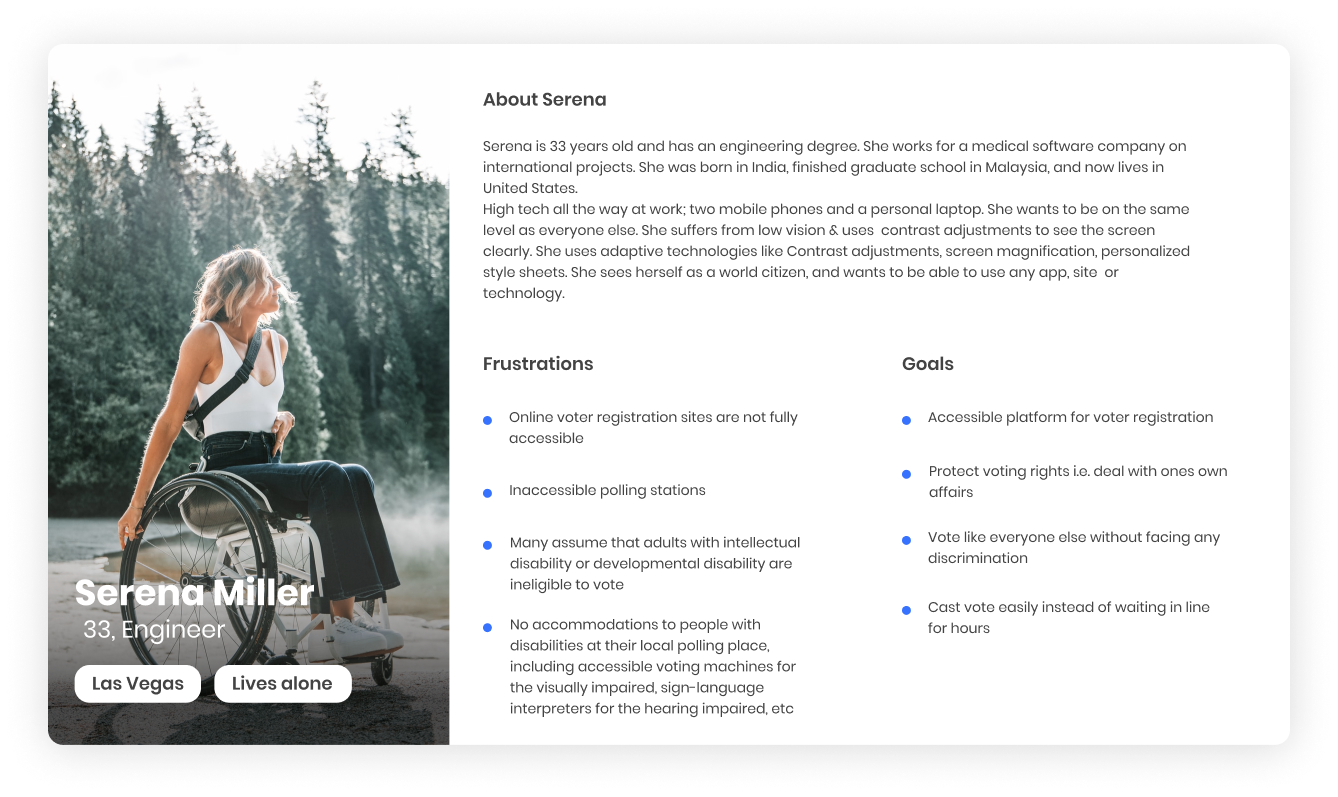
Solving💁🏻♂️
I will be working on three types of elections: Presidential Elections, House of Representatives Election & Senate Elections
I started with making a few assumptions that helped me to build a relevant product-
- The app is available only in US Jurisdiction
- The candidate is already eligible to take part in the election
- The user already has a voter id card
In addition to bringing political transparency & appealing to the youth, the app will cater to the following needs:-
- Let swaths of voters cast their ballots from their living rooms.
- Groups of people who cannot make it to the polls, mostly overseas
civilians or military personnel can cast votes. - Overcome the security problems through biometrics and other measures built into newer smartphones, as well as a back-end system that records and stores votes on a blockchain, the technology underpinning Bitcoin.
- Save huge amount of time and effort to cast a vote.
- A way to make sure the disabled and infirm can participate, a move that is likely to add thousands of voters.
- Educate all election stakeholders and push innovation forward in a responsible, transparent way.
- Improve accessibility, security and resilience when compared to any of the existing options available to those whose circumstances make it difficult to vote.
Defining tasks🗒️
I started making a list of the main tasks the user needed to complete to use the product successfully.
- Voters
- Register to vote
- View ongoing elections
- Know the issues (Local/National news)
- View candidate profile
- Choose candidate & vote
- Candidates
As a candidate the user should be able to create profile and include details like:-
- Party
- Election Type
- Agenda
- Reforms
- Jurisdiction
- Status & Position
- Bio
Rough sketching
Now I go crazy while doing wireframes, I absolutely love it, Pen and Paper wireframes are the best to try out different layouts and iterations in less time.
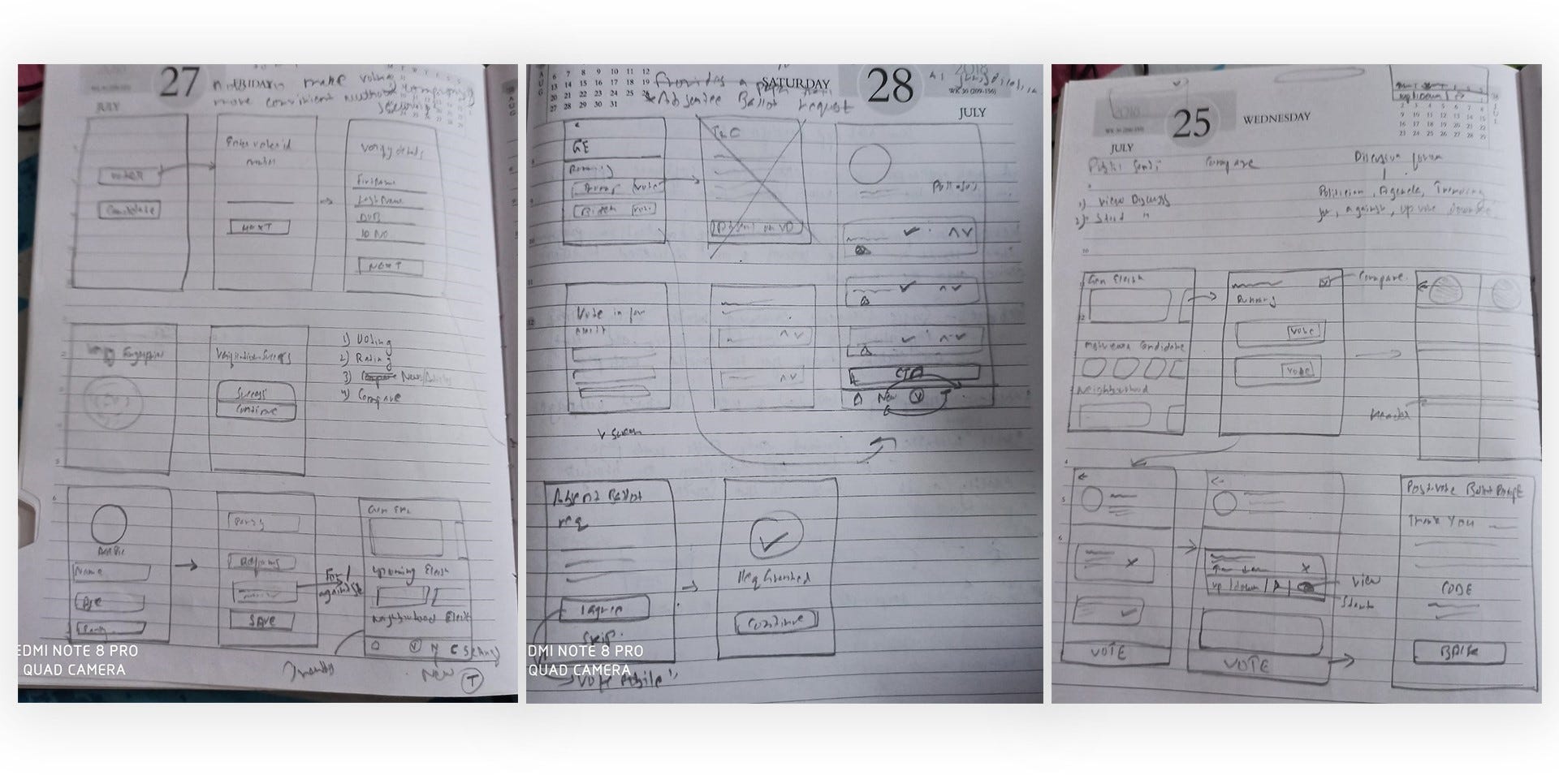
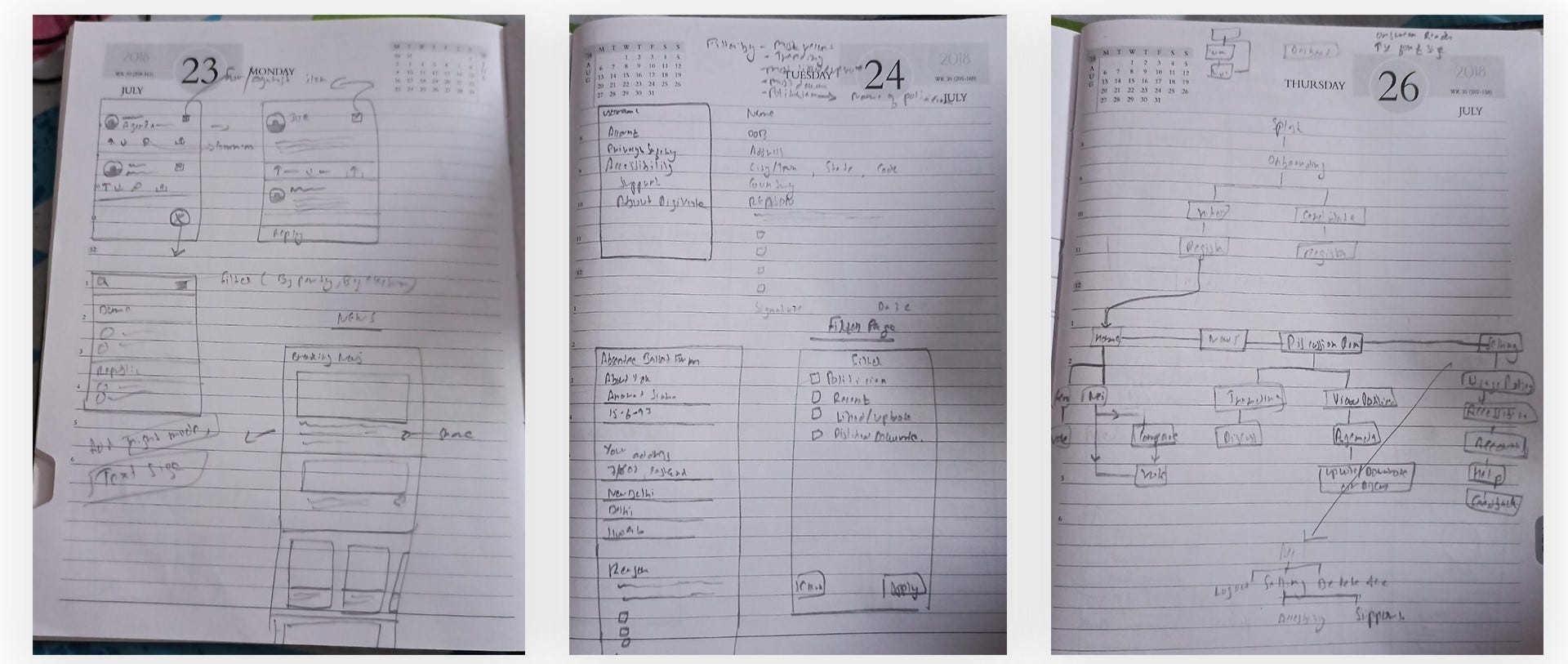
Visual design🌟
Lets walk you through visual design explaining each design decision I took while designing final screens. For the designs, I tried to do a complete iOS design so that I could get hold of the Human Interaction Guidelines and start to master them.

Onboarding
"The main thing you need to know about instructions is that no one is going to read them — at least not until after repeated attempts at 'muddling through' have failed."
― Steve Krug, Don't Make Me Think.
For onboarding I applied The Nickel Tour pattern. This is a common pattern that is very popular with mobile applications. Once the user has launched an app for the first time, they are presented with a few quick screens outlining the value of the app and/or some basics on how to get around.
This simple, static introduction serves as a welcome mat for out-of-box users. The out-of-box onboarding UX is focused on getting the user to a wow moment of satisfaction as seamlessly as possible. I tried to single out the core value proposition for the users and communicate that first.

I'm a voter
Once the user inputs the Voter Id number & confirms their identity, they will be asked to add biometric security to DigiVote which pairs the app with the phone's security pin.

- Once the user identity has been verified, the user has to fill the absentee ballot form in order to Vote Mobile. If the user wishes to fill the form at a later stage then he/she needs complete this at the time of giving vote.
- At the home screen I have used banners that stands out, grabbing the user's attention. At the top there's a quick access facility for users to instantly click(long press) on the top candidates & vote.
- To facilitate decision making users can even compare 2 different politicians & get insights about their views & stance on various laws/agendas.

How is your vote verified?
Each ballot produces three records so you can confirm your vote was counted and your jurisdiction can audit the results.
- Ballot receipt: Ballot submission generates a ballot receipts to verify. This is stamped with an anonymous ID & password protected. An anonymized copy of this receipt is also securely delivered to the jurisdiction.
- Blockchain Record: All votes pass through a verification process as a vote transaction in a blockchain network. If the selection pass the verification process, they are cryptographically bundled & stored on the blockchain network & are tamper resistant & allows the jurisdiction to conduct an audit.
- Paper ballot: Each ballot generates an official paper ballot stamped with the same anonymous ID. On election day the ballot is printed & counted like any other ballot.
This ensures that the votes are valid (maintains user uniqueness), are counted & a secure record of all the votes are kept for auditing.

- Political Leaders can create their profile and include their details like constituency, party, agenda, reforms that they want to bring, etc.
- The citizens would be able to upvote, downvote & rate their leaders across various metrics. The leader rating is very thought out, instead of a simple star rating mechanism because 1 or 5 stars doesn't really convey a lot when someone looks at it.
- It will also display overall public sentiment towards the leader so that anyone can see it and understand what the people think of the leader.
- Since a lot youth these days are unaware of politics in general therefore I created a newsfeed section which caters only election related news to the users. This will also help them take informed decisions before voting their leaders.

In order to create a digital products that can be used by the largest group of people, regardless of their current circumstances I tried to design the app from accessibility point of view.
Thank you so much for Reading ✨
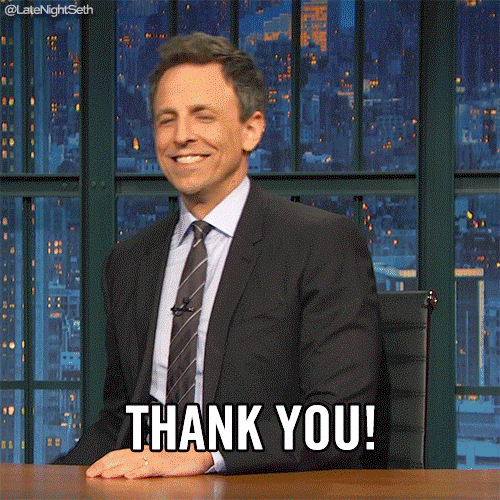
In conclusion, this project was a great learning experience! If you have any feedback or suggestions, feel free to hit me up and I'd be glad to have a chat!
You can connect with me on LinkedIn, Behance or drop me a message at sinhaanurat@gmail.com
And that's a wrap. Thank you for reading! Hope you found it insightful and take away what you liked.
Did you know?😲 You can hold that clap button for few seconds to give a maximum of 50 Claps, would really appreciate it. See ya!

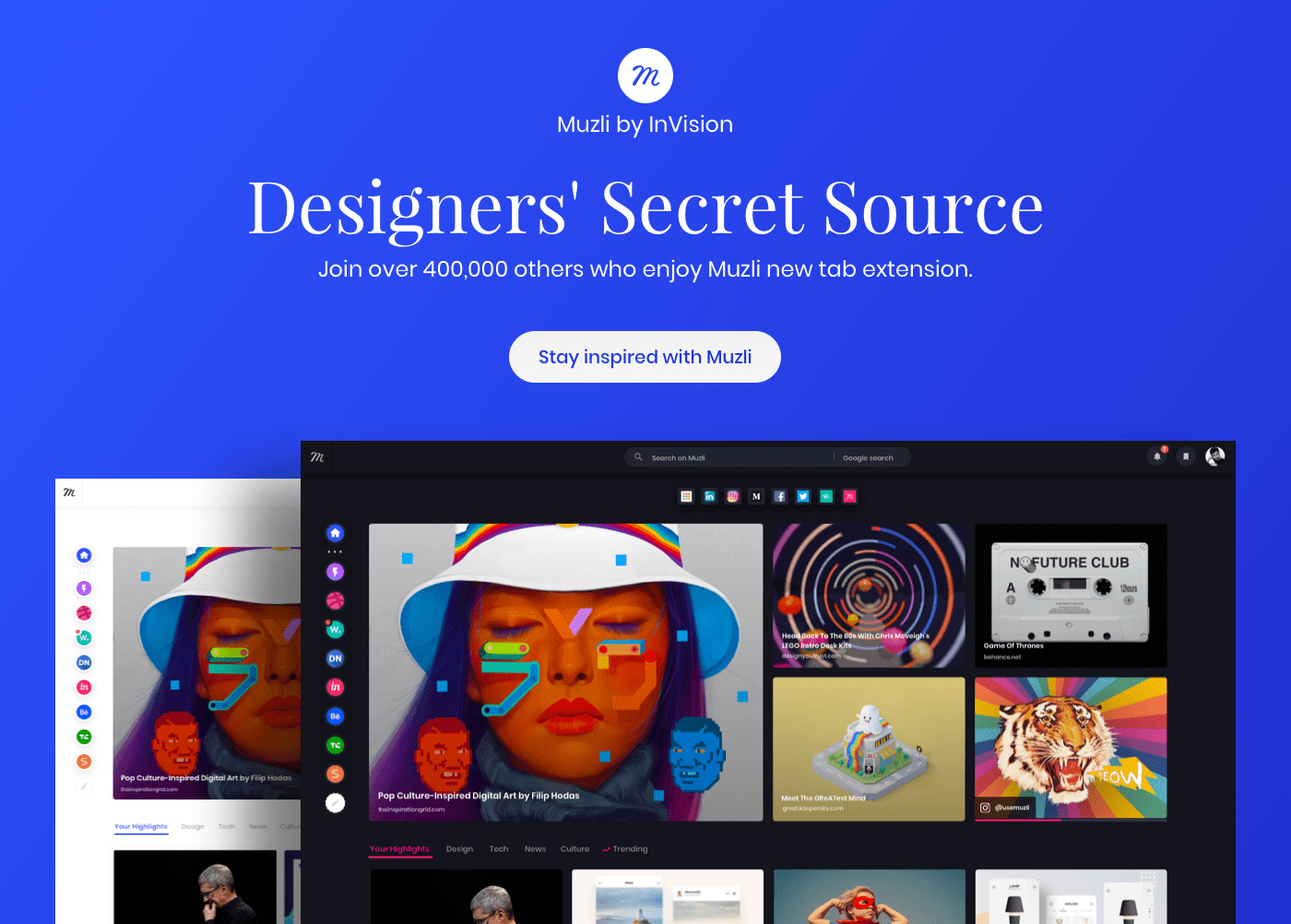
Check out my other case studies:
🤩Get my custom icons on Iconfinder.
Subscription discount & kickback : Get a 50% discount on your first month. Just click on this URL & enjoy the reward 🏆
Smartphone Case Design Voting App
Source: https://medium.muz.li/digivote-vote-mobile-ui-ux-case-study-72a83d8785fd
Posted by: pattersoncalk1984.blogspot.com

0 Response to "Smartphone Case Design Voting App"
Post a Comment